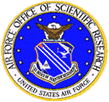Phase Processing Machines
Motion Detection Using Local Phase Information
Spatial phase in an image is indicative of local features such as edges when considering phase congruency. We have devised a motion detection algorithm based on local phase information and constructed a fast, parallel algorithm for its real-time implementation. Our results suggest that local spatial phase information may provide an efficient alternative to perform many visual tasks in silico as well as in vivo biological vision systems.
- Aurel A. Lazar, Nikul H. Ukani and Yiyin Zhou, A Motion Detection Algorithm Using Local Phase Information, Computational Intelligence and Neuroscience, Volume 2016, January 2016.
The following video shows motion detected in the "train station video" by the phase-based motion detection algorithm, and compares the result with that of the Reichardt motion detector and the Barlow-Levick motion detector.
The top row shows motion detected by the phase-based motion detection algorithm (left), the Reichardt motion detector (middle) and the Barlow-Levick motion detector (right). Red arrows indicate detected motion and its direction. On the bottom row, the contrast of the video was artificially reduced 5 fold and the mean was reduced to 3/5 of the original. The red arrows shown are duplicated from the output of the motion detectors on the original video as on the top row. Blue arrows are the result of motion detection with reduced contrast. If motion is detected both in the original video and in the video with reduced contrast, then the corresponding arrow is shown in magenta (as a mix of blue and red).
Divisive Normalization Processors
We introduced a class of divisive normalization processors (DNPs) that operate in the time and the space-time domain. Stimuli processed by DNPs can be faithfully recovered from the output, suggesting that no information is lost during processing. We posit that a feedforward/feedback divisive normalization processor is implemented in every layer of the early vision and olfactory system including, respectively, the lamina, medulla and a single layer in the lobula, and the antennal lobe and mushroom body.
- Aurel A. Lazar, Nikul H. Ukani, and Yiyin Zhou, Sparse Identification of Contrast Gain Control in the Fruit Fly Photoreceptor and Amacrine Cell Layer, The Journal of Mathematical Neuroscience, Volume 10, Number 3, Springer Open, February 2020.
- Aurel A. Lazar, T. Liu, and Yiyin Zhou, Divisive Normalization Circuits Faithfully Represent Auditory and Visual Stimuli, bioRxiv, September 2022.
- Aurel A. Lazar, Tingkai Liu, and Chung-Heng. Yeh, The Functional Logic of Odor Information Processing in the Drosophila Antennal Lobe, PLOS Computational Biology, Volume 19, Number 4, April 2023.
- Aurel A. Lazar and Yiyin Zhou, Divisive Normalization Processors in the Early Visual System of the Drosophila Brain, Biological Cybernetics, Springer, Special Issue: What can Computer Vision learn from Visual Neuroscience?, Volume 117, pp. 411-431, September 2023.
The Bionet Group is supported by grants from
 |
 |
 |
 |